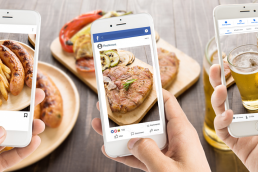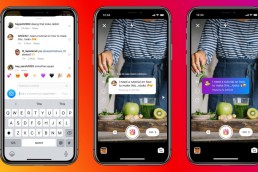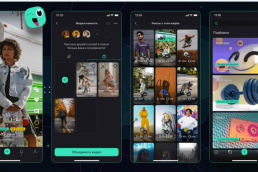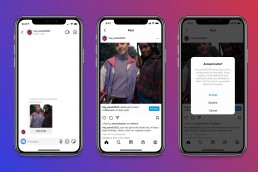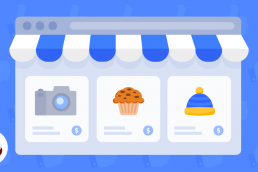One click is all it takes to start a conversation between a customer and your brand. Social media shopping is expected to soar in popularity in the coming years, providing new opportunities for smaller businesses.
It is simple to reach a broader spectrum of clients thanks to social shopping, which connects the online culture and eCommerce sectors. Moreover, social shopping has allowed companies to show how their reach affects their sales and bottom line.

This article will cover the definition of social media shopping, its importance to brands, and industry forecasts for social shopping in 2022.
What is social shopping?
Online shopping and social media come together as social shopping. Users can make purchases or visit a product website using social media sites like Instagram, Facebook, and Pinterest.
By using techniques like interactive content, messaging, and group buying, social media platforms simulate the in-person experience of shopping in actual malls and stores.
Every customer interaction with a business, from brand discovery and engagement to actual purchase, is centralised through social shopping. In doing so, you may easily convert browsers into customers by meeting them where they are.
What social media shopping does for brands
Social shopping benefits both brands and customers. Buying does not need to be a different event. In many cases, customers can purchase without leaving their preferred platform.

Social media accessibility and dialogue options help both the consumer and the brand. Other benefits include:
- You can incorporate social proof into campaigns. One of the essential factors in purchase decisions is customer reviews. Thanks to social shopping, customers may purchase your product and provide genuine comments all in one spot. You may include this social evidence in your upcoming marketing activities for increased credibility.
- Decreasing friction boosts conversions. Customers can purchase from a brand without leaving the convenience of their homes or businesses or interacting with several salespeople. They also don’t need to leave the social networking site they are already using. Customers can browse a product page and proceed to checkout in just a few clicks.
- You’ll have more information about what works. The more time consumers spend on social and buy from it, the more social becomes a treasure trove of information about your target demographic. You can swiftly gather meaningful data to serve your consumers with the appropriate solution better.
Where consumers buy on social
Interacting with peers, companies, and creators on social media has transformed it into a virtual mall where shoppers can chat as they spend. The more time consumers spend looking, just like in a real mall, the more likely they will buy something.

Consumers anticipate conducting their online purchases in 2022 using the most familiar channels. Baby Boomers expect to increase their Facebook purchases, while Gen Z consumers, who have grown up with technology, are most enthusiastic about visual social networks like Instagram, TikTok, and Snapchat.
Men hope they’ll discover their next must-have on Twitter and Twitch, while women eagerly anticipate clicking “Submit Order” on TikTok or Pinterest.
How social shoppers find the perfect product
Consumers use social media as a trusted advisor, similar to how they would utilise Google or a friend’s recommendation before purchasing from a physical store or a traditional e-commerce vendor.
As part of their research, before making a purchase, they may visit Instagram or Reddit to learn more about a business or product or check out recommendations from their current networks.

Even more so, brands help shoppers find all of the necessary things. More consumers discover a business that sells a product directly than they do through peers, influencers, or their studies. While well-targeted ads are effective, natural posts can have a significant impact.
What influences consumer buying behaviour
Customers who shop on social media still ask their peers for advice before making a choice. Friends are the most important influences for consumers between 18 and 40, with influencers coming in second.
During the pandemic lockdowns, parasocial interactions among Gen Z, Millennials, and Gen X peaked, and consumers now trust influencers the same way they do their friends. Baby Boomers who haven’t embraced influencers as much put the most faith in their relatives and family.
Trust is a potent incentive, whether from a friend’s recommendation or an influencer post. The weakest influence on a consumer’s decision to purchase a product comes from crowdsourced comments or product reviews from strangers, which a lack of established trust may explain.

Shoppers also value inclusivity, with 60% saying they are more inclined to purchase from a company that uses it in its marketing. That could entail including various racial, ethnic, or gender identities in their feeds and advertisements.
These online consumers want the variety of their local communities to be reflected in their online networks. In addition, young consumers place a high value on inclusivity, with 73% of Gen Z and 72% of Millennials mentioning it as a deciding factor when making a purchase.
Features primarily used in social media shopping
As 2022 approaches, social shoppers are becoming more involved in their online communities and utilising new platform capabilities. The various methods your clients interact with you offer an insight into how their search for and purchase of products progresses.
The most popular platform feature is live streaming, which is also a strong indicator of who would buy on social media. 71% of those who watch live streams have made a social purchase, and 48% want to make additional purchases in 2022, thanks to in-platform shopping options.

However, the effect depends on your audience. Compared to only 44% of Gen Zers, more than half of Gen X shoppers (61%) anticipate watching live video in the upcoming year.
In 2022, a streamlined in-platform purchasing experience will be crucial because 45% of consumers are eager to purchase directly from their preferred platforms. While 52% of Gen Z members are ready to make a purchase using this feature, everyone is looking forward to a faster discovery and shopping process.
The future of social commerce
With 68% of shoppers making at least one purchase directly from social media in 2021, the future of social commerce is already here. Shoppers are turning to Facebook Shops, TikTok shopping, and Instagram shopping to increase their local purchasing choices or engage in virtual communities to buy across borders.
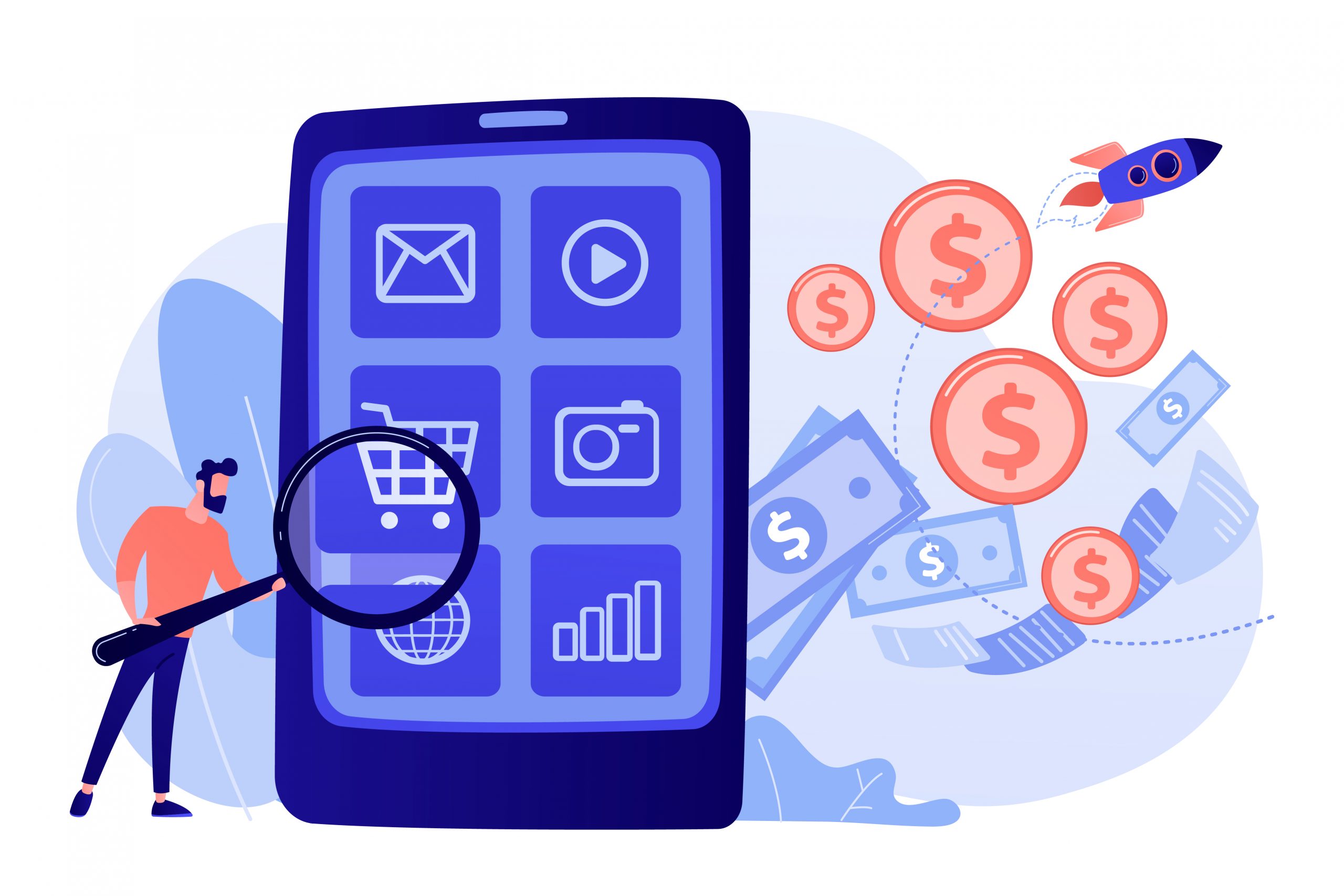
And social buying isn’t slowing down; in 2022, 98% of consumers plan to make at least one purchase via social shopping or influencer commerce.
Final Thoughts
Consumers continue to desire more straightforward, luxurious, and speedier purchasing options. Social shopping meets all three criteria and is essential to any omnichannel strategy. With customer tastes changing rapidly, the chance to sell via their digital comfort zones is unrivalled. As a result, brands that embrace social media are poised to outperform their competitors in 2022 and beyond.
Kamran Shukurlu
Kamran is a T-shaped eCommerce Digital Marketer and Content Strategist with 9+ years of experience in 30+ industries. A few of the companies that benefited from his services: Leo Burnett, Translated, Airbnb, Samsung, Huawei, etc.
Related Posts
March 24, 2025
Leveraging X’s Subscription Feature for Monetisation
March 13, 2025
Maximising Engagement with Instagram’s New DM Features
February 22, 2025
LinkedIn Polls: How to Use Audience Insights to Boost Engagement
February 12, 2025
Pinterest for Influencers: How to Monetise Your Audience
December 24, 2024
TikTok Duets and Stitch: Innovative Ways to Collaborate and Engage
December 13, 2024
Unlock viral pins with Click-Worthy Pinterest graphics
December 2, 2024
6 Ways to Perform Social Media Competitor Analysis
November 23, 2024
TikTok Advertising Best Practices
October 25, 2024
How to Use Instagram Broadcast Channels for Brand Engagement
October 11, 2024
Using Augmented Reality Filters in Social Media Campaigns
October 4, 2024
Why Instagram Is Good for Marketing: Engaging Your Audience
September 17, 2024
The Impact of Smooth Transactions on Your Brand Reputation
September 11, 2024
Building Brand Loyalty Through Private Social Media Groups
September 2, 2024
Creating Shareable Personalised Content
August 28, 2024
The Secret TikTok Viral Recipe in 2024
August 17, 2024
Harnessing the Power of User-Generated Content in 2024
August 8, 2024
Creating an Effective Social Media Content Strategy
July 18, 2024
Social SEO: Optimising Your Content for Discovery
July 8, 2024
The Comeback of Long-Form Content
June 5, 2024
How to Import Sounds From TikTok to Instagram?
May 21, 2024
9 TikTok Challenges List And TikTok Trends
February 24, 2024
Pinterest Account Suspended Appeal – How To Do It Right?
February 3, 2024
How to Make Money With Instagram Theme Pages In 2024
January 11, 2024
Resort And Hotel Digital Marketing Campaign Strategy And Ideas
December 26, 2023
New Year and Christmas Interactive Posts and Ideas For Social Media
December 8, 2023
B2B Community Management: Unpopular Opinion To Level Up
November 23, 2023
Feel Good Friday Social Media Posts And Wishes
October 6, 2023
How to Stream Games on TikTok With TikTok Stream Key
September 15, 2023
Creating an Effective Content Calendar
September 15, 2023
10 Tips to Optimize Facebook Page for SEO and Reach More People
September 4, 2023
How to Go Live on TikTok Without 1000 Followers In 2023
August 14, 2023
How Much Does IG Models Make And How To Become One
June 26, 2023
How To Get Verified On LinkedIn In 2023?
March 25, 2023
How to Create a Facebook Group Funnel to Drive Leads
March 19, 2023
How to Mass Archive Instagram Posts in 2023 + Unarchive
March 13, 2023
8 Social Media Community Building Strategies For 2023
February 18, 2023
How To Make Money On Instagram With 500 Followers
February 18, 2023
How to Go Live on LinkedIn – Best Practices and Guides
February 8, 2023
Instagram Guides Examples and Ways to Use Them
February 8, 2023
How to Schedule Instagram Posts Without Third-party App
January 22, 2023
Growth Hacking for Instagram to Get More Followers in 2023
January 20, 2023
How To Upload GIFs on Twitter in 2023
January 3, 2023
What To Do When you go Viral on Instagram
December 23, 2022
How to Spy on Competitors’ Facebook Ads For Free (6 Tools)
December 22, 2022
How to Get More Views on LinkedIn – 10 Tips to Reach More People
December 19, 2022
What To Do Before and After Posting On Instagram
December 14, 2022
How Instagram Search Works: A Comprehensive Guide In 2022
November 15, 2022
Twitter Spaces Analytics: Ultimate Guide to Your Space Insights
November 13, 2022
20 Viral Instagram Reels Hooks To Keep People Watching
October 29, 2022
How To Speed Up Existing Video For Instagram Reels – FOR FREE
October 16, 2022
How to Use Twitter Advanced Search Tool on Mobile
October 16, 2022
7 Instagram Mistakes to Avoid & Here’s Why
October 9, 2022
10 Proven Instagram Story Ideas to Engage Your Audience
September 20, 2022
Tips to Create a Successful Hashtag Campaign
September 8, 2022
The Top 9 Instagram Tools That Can Boost Your SME’s Visibility
August 28, 2022
How to Regram: The Art of Reposting on Instagram
August 11, 2022
A Checklist to Launch a Rebrand on Social Media
August 7, 2022
The Whys and Hows of Facebook Video Ads
August 7, 2022
How To Write Good Instagram Captions
July 27, 2022
How to Plan Your Social Media Campaigns
May 4, 2022
10 Social Media Myths To Unlearn in 2022
April 11, 2022
Twitter Analytics Tools to Level Up Your Game
March 14, 2022
Monthly Social Media Updates And News – February 2022
February 23, 2022
Social Media in the times of COVID-19: Adapting to a New Normal
February 14, 2022
Monthly Social Media Updates And News – January 2022
February 2, 2022
Optimise Google My Business: An In-depth Guide to Get it Right
January 19, 2022
9 Tips to Sell on Pinterest: Your Branding And ROI Booster
January 12, 2022
Monthly Social Media Updates And News – December 2021
December 10, 2021
Risks And Dangers of Buying Instagram Followers
December 8, 2021
Monthly Social Media Updates And News – November 2021
November 2, 2021
Monthly Social Media Updates And News – October 2021
October 14, 2021
Monthly Social Media Updates And News – September 2021
October 1, 2021
Brief 18 Twitter Hacks You’ll Wish You Knew Earlier
September 23, 2021
Instagram Pre-Launch Strategy 2022: A Proper Guide for Your Product
September 14, 2021
Monthly Social Media Updates And News – August 2021
September 8, 2021
15 Social Media Post Types to Keep Your Content Engaging
September 8, 2021
How to Sell on Facebook Shops and Facebook Marketplace in 2023
August 16, 2021
Driving Traffic From Twitter Straight to Your Blog in 2022
August 13, 2021
The ABCs of Using LinkedIn Videos Like a Pro in 2022
August 11, 2021
Monthly Social Media Updates And News – July 2021
July 29, 2021
Spiral Up Your Engagements With Instagram Carousels
July 17, 2021
Monthly Social Media Updates And News – May 2021
July 5, 2021
How to Mass Delete Instagram Posts in 2022?
April 29, 2021
Monthly Social Media Updates And News: March 2021
April 17, 2021
Latest Social Media Updates And News – 2022
April 17, 2021
Monthly Social Media Updates And News: February 2021
March 31, 2021
How to Choose the Best Competitor Analysis Framework
March 1, 2021
Monthly Social Media Updates And News: January 2021
February 21, 2021
How To Get Unlimited Free Leads For Any Business In UK
February 20, 2021
How to Find Brands That Collaborate With Small Influencers
February 4, 2021
Web Content Development 101 For Small Businesses
January 28, 2021
Monthly Social Media Updates and News: December 2020
January 13, 2021
How To Add A Link To Instagram Story Without 10K Followers
December 14, 2020
6 Testimonial Examples And How To Ask For Them
December 11, 2020
IG Line Break Generator: No Need For it Anymore? (2022)
December 2, 2020
Monthly Social Media News And Updates: November 2020
April 22, 2020
Social media marketing for recruitment agencies
December 23, 2019
How to market your podcast on social media
October 31, 2019
Account-based mindset vs. lead-based marketing
October 22, 2019
The benefits of starting your own podcast
October 14, 2019
What’s the LinkedIn Social Selling Index? (and why you need it)
October 8, 2019
7 ideas to network effectively – and locally
September 26, 2019
5 tips from an influencer to unlock your potential
September 16, 2019
How to create an effective Facebook ad: 7 easy tips
September 7, 2019
3 inspiring marketing campaigns with awesome results
September 1, 2019
Everything you need to know about lead generation
August 28, 2019
Can my brand benefit from a social media calendar?
August 13, 2019
3 basics of KPIs: what to measure and why?
August 9, 2019
5 Story Highlight ideas to totally revamp your Instagram
July 31, 2019
The good, the bad, and the funnel
July 24, 2019
The basics of content marketing – why you need it
July 18, 2019
Primark – how the brand uses social media
July 10, 2019
The evolution of Twitter for social media marketing
July 7, 2019
Discover 3 benefits of WhatsApp Business!
June 28, 2019
How Lululemon uses social media: 5 ideas
June 24, 2019
New Instagram @shop and how it works
June 17, 2019
5 foolproof tools to create a buyer persona
May 29, 2019
3 burning social media trends to watch out for
May 23, 2019
7 ingredients every entrepreneur needs to have
May 13, 2019
5 Social Media Tools: Marketing Made Easy!
April 15, 2019
Wanna kickstart your landing page? 3 reliable tools!
March 26, 2019
3 video marketing tricks to boost engagement
February 26, 2019
A five-star femmepreneur – meet Gretta van Riel!
February 15, 2019
Why Twitter is essential – revamp your marketing strategy today!
February 7, 2019
SEO for Newbies: The Basics
January 22, 2019
4 amazing inbound marketing tools to try now!
January 16, 2019
Everything about ecommerce, decoded!
January 11, 2019
Influencer marketing: why is it crucial?
January 7, 2019
How social media is changing your brain
January 2, 2019
Choosing a signature colour for your brand
December 28, 2018
Advanced Instagram for startups: an effective step-by-step guide
December 1, 2018
Instagram from Scratch!
November 22, 2018
Elevate your Brand with these 4 New Linkedin Tools
January 15, 2018
5 Ways Social Media Can Help Your Small Business In 2018
September 25, 2017
7 indispensable social media tools for small businesses
September 1, 2017
September 2017: Social Media Roundup
February 2, 2017
Our new promotional video
January 17, 2017
Why your business needs to be active on social media
November 3, 2016
The Top 10 Small Fashion Brands on Instagram
September 29, 2016
Hоw Tо Grоw Yоur Smаll Business Uѕing Social Media
September 26, 2016
How can I use social media for customer service?
September 20, 2016
















































